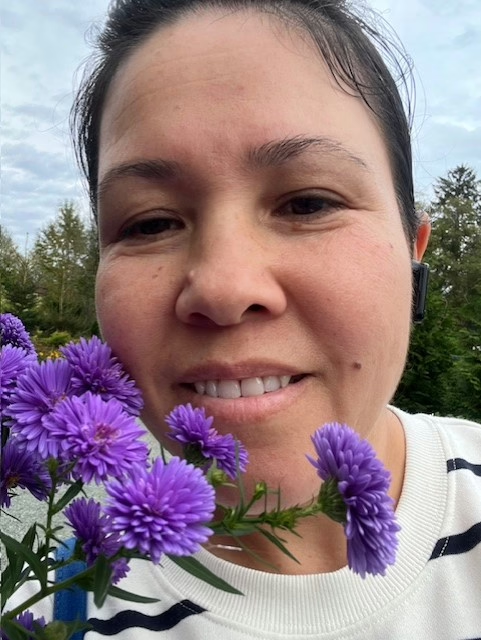Vancouver, BC – 10/16/2025 — The BC Coroner’s Service has released Creating Connection, Supporting Strengths: A Review of Youth and Young Adult Deaths by Suicide In British Columbia, 2019-2023, a reminder that too many young people are dying by suicide. The Crisis Centre of BC acknowledged the findings confirm what we know from our frontline responder work: the urgent need for community-based, connected care that meets youth where they are.
“Creating connection is key to suicide prevention,” says Stacy Ashton, executive director at the Crisis Centre of BC. At the Crisis Centre of BC, everything we do begins with connection. Last year alone, we went into over 350 classrooms talking directly to high school students about reaching out for help.
“Last year, thousands of young people called one of our distress lines. They’re doing what we ask of them when they feel like they want to die: they are reaching out to crisis lines. But when the call ends, too often the system leaves them without the ongoing support that could help them live through their pain.
Across BC, care often stops at treating depression or anxiety, but suicide itself is rarely addressed head-on. We know what works to help people survive the kind of pain that makes them want to die. The most effective steps are simple, evidence-based, and deeply human:
- Create a formal safety plan in collaboration with the person having thoughts of suicide
- Limit access to means that can end a life
- Ensure a warm handoff to continuing care – not just a cold referral form
- Reach out after discharge from hospital to remind the person they are not alone.
These measures directly address the fact of suicidal pain, no matter what is causing it.
“When someone goes to hospital with a fever, we bring the fever down because the fever itself can kill people. When someone is suicidal, we look for a diagnosis to reach – and if we don’t find one, we often send the young person home, hoping the pain will pass. That’s not care; that’s triage. And triage means deciding who gets help instead of making sure everyone does,” states Ashton.
The Coroner’s report found that only 60% of the youth and young adults who died by suicide met the criteria for a mental health diagnosis – this means that four in ten would not have qualified for mental health care at all.
Even so, most of these young people reached out. Nearly eight in ten (79%) had seen a mental health practitioner within a year, 25% within a week of their death, and almost one in four had been hospitalized. Forty six % had been prescribed medication in the 12 months prior to their death. They did what people do in crisis: they sought help. Despite well-known barriers to care, the young people documented in the BC Coroner’s report did their level best to live.
“We recognize these young people,” says Ashton. “They reached out to us, to doctors, to teachers, to friends. The truth is, our systems weren’t built to hold them through their pain. That’s what has to change.”
The Crisis Centre of BC is helping to build a crisis care continuum designed to respond directly to suicidal crisis, wherever it begins. Whether someone calls 9-1-1, talks to a doctor, or walks into an emergency room, connection must be the constant. A truly connected system links every point of contact to 24/7, no-barrier support through crisis lines.
Crisis responders meet people where they are, over the phone, by text, or through collaboration with community partners. In regions where 911 routes mental-health and crisis calls to crisis lines, 80% of those calls are resolved safely without police or hospital involvement. For the remaining 20% who need in-person support, crisis lines can activate mobile mental-health teams such as CRCL, which pair clinicians with people who have lived experience of crisis. These teams provide care, not custody, diverting people from high-cost, high-harm responses toward help that heals.
“We already know an integrated crisis care continuum is what our province needs to respond to the complex mental-health and addictions crisis playing out in our homes and streets,” said Ashton. “Connection and warm follow-up must be at the centre of every response. Crisis lines are incredibly flexible tools: available 24 hours a day, every day. We can intervene before someone reaches an emergency room, follow up after hospital discharge, and support families and friends who are struggling to keep someone safe. There are many ways people fall through the cracks, but we can catch them with systems built on connection.”
Read more about our work towards a crisis care continuum.
Media Contact
Stacy Ashton
Executive Director, Crisis Centre of BC
sashton@crisiscentre.bc.ca
Jeffrey Preiss
Director, Development & Communications
jpreiss@crisiscentre.bc.ca
Backgrounder
Creating Connection, Supporting Strengths: A Review of Youth and Young Adult Deaths by Suicide In British Columbia, 2019-2023.
The report makes five key recommendations:
- Create and implement a provincial suicide-risk-reduction framework specifically focused on youth and young adults.
- Improve data collection, information sharing and reporting processes to better understand and support diverse communities throughout B.C.
- Review existing social and emotional health-related resources to ensure they meet the needs of the diversity of school-age students in B.C.
- Create an educational model to ensure doctors, nurses, paramedics and other emergency medical professionals are appropriately trained in early identification, assessment, management and follow-up of youth and young adults who are at higher risk of death by suicide.
- Co-develop a “third spaces” strategy to create venues for young people to develop and maintain connections in their own communities.

